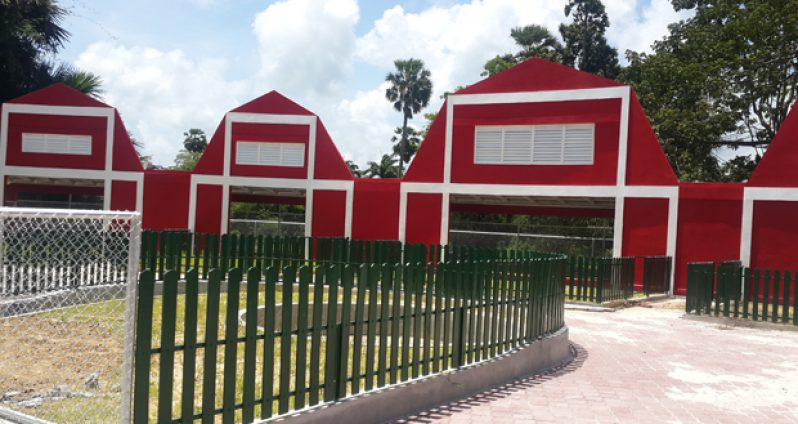FOSTERED by the Three- Parks Initiative in order to enhance biodiversity conservation in urban areas for the protection of our ‘green spaces,’ the zoological park (zoo) has completed its major renovations and is currently addressing pending work on its petting zoo.
Ms. Annalise Bayney, the Protected Areas Commission officer that supervises this initiative, in a brief interview underscored that all major works have been completed, leaving only minor works such as the installation of

doors, windows and other small issues. However, there is still uncertainty as to when the petting zoo will be completed, since it all depends on the animals’ adjustment to the new arena.
Presently however, the cages have been minimised by the use of new types of mesh to facilitate proper viewing. There has also been a refashioning of the enclosures in order to provide accommodation and safety for both animals and care-takers. The zoo’s current primary objective is to implement international standards to promote animal welfare.
The purpose of the petting zoo is to modernise the larger zoological park and to provide a different experience, since wild animals are normally viewed from afar, thus there is no contact. The petting zoo, on the other hand, will foster physical interaction with the animals and the public, particularly youths.
Additionally, although access to the facility will be free, it is expected that the facility will contribute to its own upkeep through rental for children’s birthday parties and reduced food costs from visitors buying to feed the animals. The petting zoo will feature ducks, donkeys, goats, cows and chickens. The maintenance of these animals will however be less expensive, when compared to the other animals in the larger Zoo.
The Zoo’s 45 species of animals are housed in enclosures that are not in line with current best practices and understanding in Zoo husbandry, and are becoming increasingly difficult and expensive to maintain. Thus, the Ministry of Natural Resources and the Environment (MNRE) and the Protected Areas Commission launching of the Three-Parks initiative to modernise the Zoo.
However, the Zoo has established a Master Plan that is quite feasible and currently ongoing. This proposal has been viable in its objective to augment prime facilities and regenerate as well as develop road and rail networks in all three parks: The National Park, The Zoological Park and The Joe Vieira Park to offer proper quality overhauls to the municipal.
The rehabilitation of the zoo aims to facilitate visitors that are interested in gaining greater knowledge of animal species experienced in habitats that are representative of Guyana’s eco-systems. Moreover, it seeks to create new exhibit spaces that are huge enough to accommodate the animals and give them room to roam freely, as in their natural habitats.
According to the Master Plan, five projects are to be completed: the Coastal Wetlands that will cater for the Black Caiman; the Savannah and the Mountain Highlands that will seek to accommodate the jaguars, the Rainforest that will be home to the Harpy Eagle and other bird species and lastly, World Treasures that will hold lions and tigers. Each habitat zone will provide information on Protected Areas associated with that particular ecosystem, such as a Shell Beach information display in the Coastal Wetlands zone, and a Kanuku Mountains display in the Mountain Highlands zone.
Covered climate- controlled structures will provide visitors’ comfort stations where habitat views, small animal exhibits, and interpretive information will be afforded in relative protection from the elements. The storyline will be conveyed to the visitor through conventional graphics, artifacts, interactive elements, live animals, architecture, and landscape simulation. Visitors will be immersed into zones which are created to reinforce and illustrate the interpretive themes of animal interactions (predator/prey), symbiotic plant and animal associations, indigenous peoples and modern human relationships with the natural world.
The Zoological Park came into existence in 1952 and affords locals and tourists alike the chance to experience a diverse animal collection in a safe and accessible environment. It occupies approximately four acres of land and serves as a shelter for abandoned and abused animals. It is beneficial for visitors, since it provides a spectrum for educational and recreational facilities that serve to highlight information and encourage admiration for wildlife in Guyana. Given that much of the Zoo’s infrastructure was designed in the 1950s, it has not since reflected present international standards, hence, the Three-Parks initiative.



.jpg)










